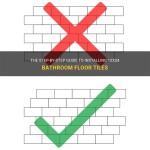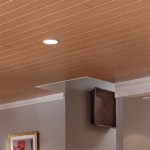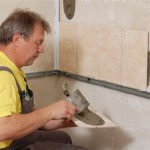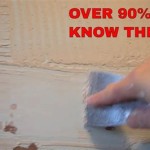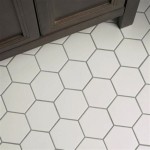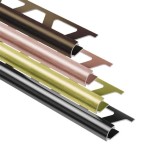What Can I Use To Get Dried Grout Off Tiles and Shower Cleaner?
Dried grout haze and stubborn soap scum are common problems encountered in tiled surfaces, particularly in bathrooms and showers. These residues not only detract from the aesthetic appeal of the tiles but can also harbor bacteria and mold if left unaddressed. Fortunately, several effective cleaning agents and methods are available to tackle these issues. This article provides a comprehensive overview of products and techniques suitable for removing dried grout and cleaning shower tiles, focusing on both commercially available solutions and DIY alternatives.
The selection of the appropriate cleaning method depends on the type of tile, the severity of the grout haze or soap scum accumulation, and the user's preferences regarding chemical usage. Some solutions are more abrasive than others and might damage delicate tile surfaces, while others are more environmentally friendly. Therefore, a thorough understanding of the available options is crucial for achieving optimal cleaning results without compromising the integrity of the tiled surfaces.
Proper ventilation is essential when using any cleaning product, particularly those containing strong chemicals. The use of protective gear, such as gloves and eye protection, is highly recommended to prevent skin and eye irritation. Furthermore, it is always advisable to test the chosen cleaning agent on a small, inconspicuous area of the tile before applying it to the entire surface. This helps to ensure that the product does not cause discoloration, etching, or other undesirable effects.
Understanding the Nature of Dried Grout and Soap Scum
Dried grout haze is a thin film of grout residue that remains on the surface of tiles after the grouting process. It typically appears as a cloudy or hazy layer that obscures the true color and texture of the tiles. This haze is often composed of cement-based materials, polymers, and pigments present in the grout mix. The longer the grout haze is left untreated, the more difficult it becomes to remove, as it hardens and bonds to the tile surface.
Soap scum, on the other hand, is a deposit that forms on shower tiles and glass surfaces due to the interaction of soap, body oils, and hard water minerals. It consists primarily of calcium and magnesium stearate, which are insoluble salts that precipitate out of solution and adhere to surfaces. Soap scum tends to build up over time, creating a grimy, opaque layer that is difficult to remove with ordinary cleaning methods. The composition of soap scum can vary depending on the type of soap used and the mineral content of the water.
Both dried grout and soap scum are alkaline in nature, which means they are resistant to removal by acidic cleaners. However, certain acidic solutions can be effective in dissolving the mineral deposits that contribute to their formation. The key is to choose a cleaning agent that is strong enough to break down the deposits without damaging the underlying tile or grout.
Commercial Cleaners for Dried Grout and Soap Scum
Numerous commercial cleaning products are specifically formulated for removing dried grout haze and soap scum. These products typically contain a blend of surfactants, solvents, and acids that work together to dissolve and lift the deposits from the tile surface. When selecting a commercial cleaner, it is important to carefully read the product label and follow the manufacturer's instructions regarding application and safety precautions.
Grout haze removers are typically acidic solutions that are designed to dissolve the cement-based components of dried grout. These products often contain phosphoric acid, hydrochloric acid, or sulfamic acid as the active ingredient. Acidic grout haze removers can be very effective in removing stubborn grout residue, but they should be used with caution, as they can etch or discolor certain types of tile, such as marble or natural stone. Neutral grout haze removers are also available, which rely on enzymes and surfactants to break down the grout residue without the use of harsh acids.
Soap scum removers, on the other hand, often contain chelating agents, such as EDTA or citric acid, which bind to the mineral deposits in the soap scum and prevent them from re-depositing on the tile surface. Some soap scum removers also contain surfactants that help to loosen the soap scum and make it easier to wipe away. Many commercial soap scum removers come in the form of sprays, foams, or gels, which allow for easy application and targeted cleaning.
Popular brands of commercial cleaners for dried grout and soap scum include: Zep Grout Cleaner & Brightener, CLR Bath & Kitchen Cleaner, Lime-A-Way Bathroom Cleaner, and Tilex Mold & Mildew Remover. When using these products, it is important to wear gloves and eye protection, and to ensure adequate ventilation in the cleaning area. It is also recommended to test the product on a small, inconspicuous area of the tile before applying it to the entire surface.
DIY Cleaning Solutions for Dried Grout and Soap Scum
For those who prefer to avoid the use of harsh chemicals, several DIY cleaning solutions can be effective in removing dried grout and soap scum. These solutions often rely on readily available household ingredients, such as vinegar, baking soda, and citric acid.
White vinegar is a versatile cleaning agent that can be used to dissolve mineral deposits and soap scum. It is mildly acidic and can be safely used on most types of tile, although it should be avoided on natural stone surfaces, such as marble or granite, as it can etch the stone. To use vinegar for cleaning tiles, simply mix equal parts white vinegar and water in a spray bottle and apply the solution to the affected areas. Let the solution sit for 10-15 minutes, then scrub the tiles with a sponge or brush and rinse thoroughly with water.
Baking soda is a mild abrasive that can be used to scrub away stubborn soap scum and dried grout. To use baking soda, mix it with a small amount of water to form a paste. Apply the paste to the affected areas and scrub with a sponge or brush. Rinse thoroughly with water. Baking soda can also be combined with vinegar to create a fizzing action that helps to loosen stubborn deposits.
Citric acid, found in lemons and limes, is another natural cleaning agent that can be used to dissolve mineral deposits and soap scum. To use citric acid, cut a lemon or lime in half and rub it directly onto the affected areas. Let the juice sit for 10-15 minutes, then scrub the tiles with a sponge or brush and rinse thoroughly with water. Alternatively, you can mix lemon juice or lime juice with water in a spray bottle and apply the solution to the affected areas.
Hydrogen peroxide is a mild disinfectant and bleaching agent that can be used to remove stains and mildew from tiles and grout. To use hydrogen peroxide, simply spray it directly onto the affected areas and let it sit for 10-15 minutes. Then, scrub the tiles with a sponge or brush and rinse thoroughly with water. Hydrogen peroxide should be used with caution on colored grout, as it may cause fading.
Borax, also known as sodium borate, is a natural mineral that can be used as a cleaning agent and disinfectant. To use borax, mix it with water to form a paste and apply it to the affected areas. Let the paste sit for 15-20 minutes, then scrub the tiles with a sponge or brush and rinse thoroughly with water. Borax should be used with caution around children and pets, as it can be harmful if ingested.
Tools and Techniques for Effective Cleaning
In addition to choosing the right cleaning agent, it is also important to use the right tools and techniques to achieve optimal cleaning results. The following tools and techniques can be helpful in removing dried grout and soap scum from tiles:
Scrub brushes: A variety of scrub brushes are available for cleaning tiles and grout, including grout brushes, tile brushes, and stiff-bristled brushes. Choose a brush that is appropriate for the type of tile and the severity of the cleaning task. For narrow grout lines, a grout brush with a pointed head is ideal. For larger tile surfaces, a tile brush with a wide head is more efficient. Avoid using brushes with metal bristles, as they can scratch or damage the tile surface.
Sponges: Sponges are useful for wiping away cleaning solutions and rinsing tiles. Choose a sponge that is absorbent and durable. Microfiber sponges are particularly effective at trapping dirt and grime. Avoid using abrasive sponges, as they can scratch or dull the tile surface.
Steam cleaners: Steam cleaners use hot steam to loosen and dissolve dirt, grime, and soap scum from tiles and grout. Steam cleaning is a chemical-free cleaning method that can be very effective in removing stubborn deposits. Steam cleaners can be used on a variety of tile surfaces, but they should be used with caution on natural stone surfaces, as the high heat can damage the stone. Always follow the manufacturer's instructions when using a steam cleaner.
Scrubbing pads: Non-scratch scrubbing pads can be used to remove stubborn soap scum and dried grout without damaging the tile surface. Choose a scrubbing pad that is specifically designed for use on tiles. Test the scrubbing pad on a small, inconspicuous area of the tile before using it on the entire surface. Apply gentle pressure when scrubbing to avoid scratching the tile.
Grout saws and scrapers: For extremely stubborn grout haze or soap scum, a grout saw or scraper may be necessary. These tools are designed to remove the deposits without damaging the surrounding tile. Use a grout saw or scraper with caution, as they can easily scratch or chip the tile if not used properly. Always wear eye protection when using these tools.
Proper ventilation is essential when cleaning tiles, especially when using strong chemicals. Open windows and doors to allow fresh air to circulate. Use a fan to help circulate the air. Wear gloves and eye protection to protect your skin and eyes from contact with cleaning chemicals. Test the cleaning solution on a small, inconspicuous area of the tile before applying it to the entire surface. This will help to ensure that the cleaning solution does not damage or discolor the tile.

How To Clean Bathroom Tile And Grout Reviews By Wirecutter

7 Best Tile Grout Cleaners Of 2024 Tested By Experts

How To Clean Shower Tile The Home Depot

4 Ways To Clean Grout Off Tile Wikihow

How To Get Rid Of Leftover Grout Haze Quickly And Easily The Creek Line House

The 6 Best Shower Cleaners 2025 Tested By An Editor

7 Proven Ways To Clean Shower Tile Works Every Time

How To Clean Grout 5 Popular Methods Remove

The Ultimate Guide To Cleaning Grout 10 Diy Tile Cleaners Tested Bren Did

11 Best Shower Cleaners Tested Reviewed Nbc Select
Related Posts

